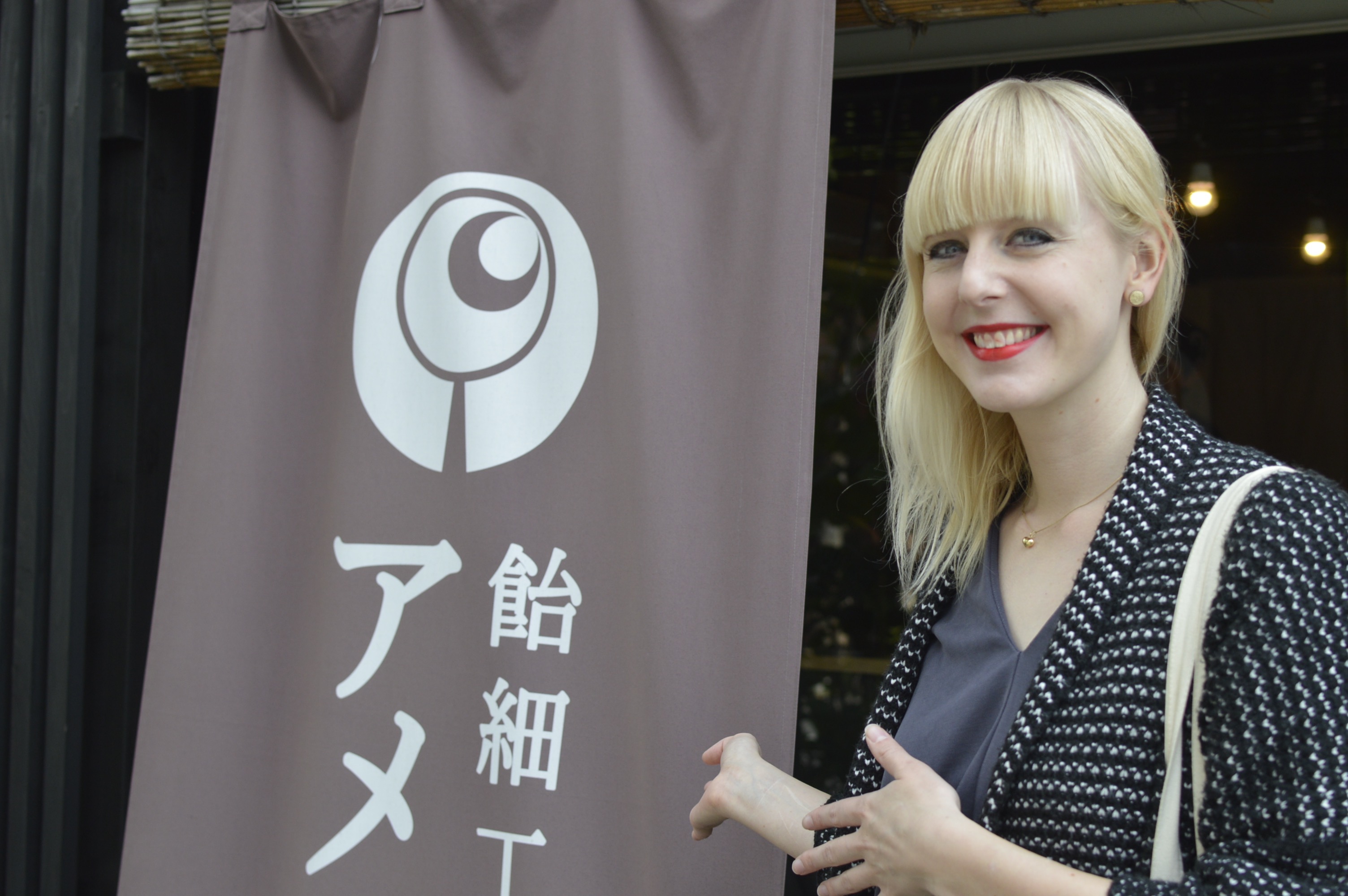
Hello everyone! This is Nele, reporter for Origami. If you think of Asakusa, what first comes to mind is the unique atmosphere. It’s the heart of shitamachi, or “downtown”, where a feeling of an “old Tokyo” or “Edo” is still present. Whether you visit Nakamise shopping street, always crowded with tourists, the nostalgic Kamiya Bar serving its original drink Denki Bran, or Japan’s oldest vintage amusement park Hanayashiki, or take ride on the rickshaws in front of the station or on one of the boats on Sumidagawa – you will feel a sense of nostalgia. Asakusa is a place distinctively different from the rest of Tokyo metropolis, making it fascinating especially for non-Japanese visitors. This time, we passed by the sightseeing spots and visited a small shop not far from the Sumidagawa riverside – a shop called Ameshin.
But what exactly is Ameshin?
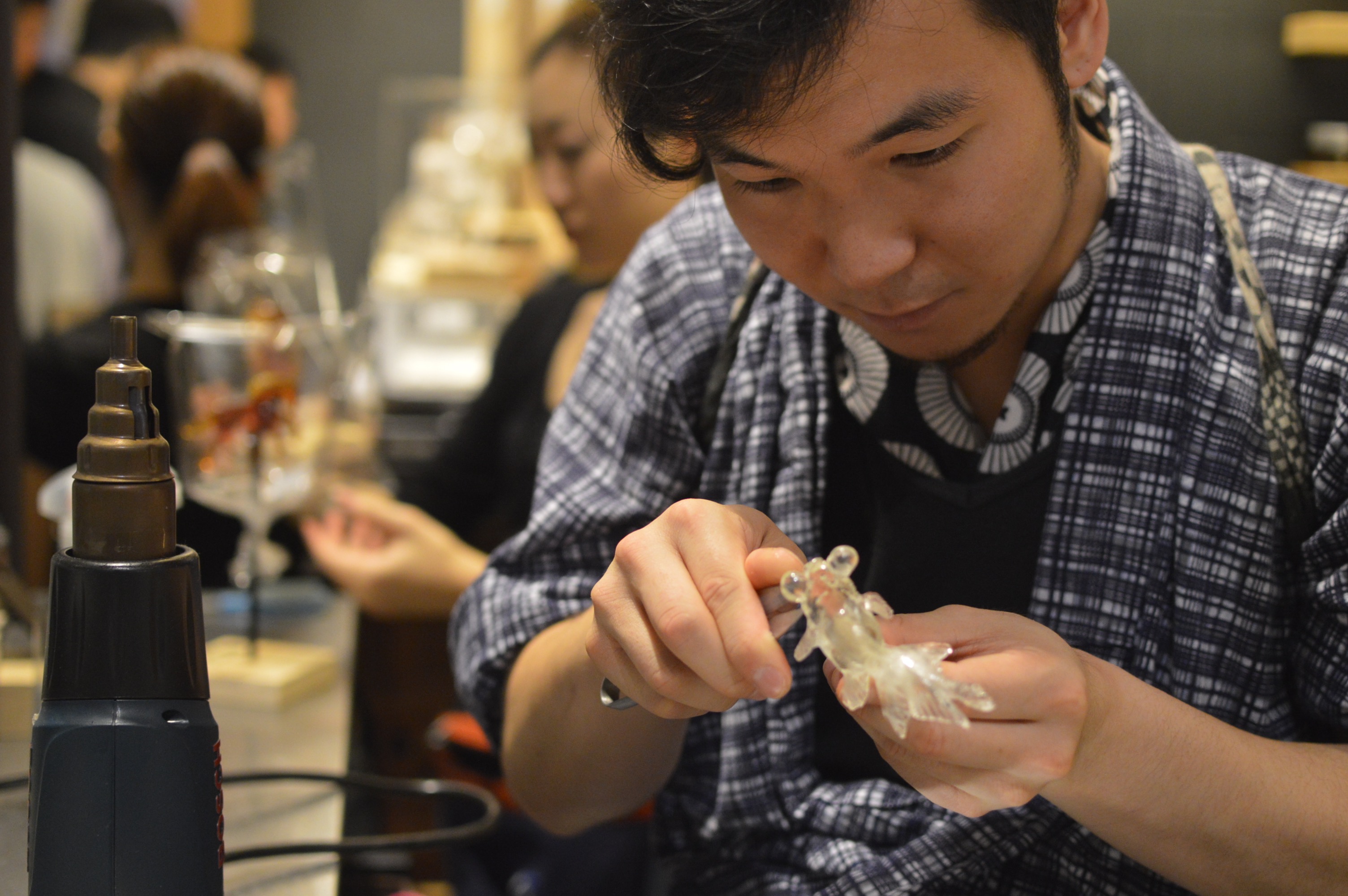
The place we visited today, Ameshin, is a shop all about the traditional Japanese craft amezaiku. Have you heard of it? It’s the craft, or you could say art, of forming softened candy into all kinds of animal shapes. It’s a show only lasting a few minutes until the candy is hard, where a shape is formed out of it right in front of your eyes. It is made out of candy, so of course it is edible, but it is so detailed and beautiful, making it difficult to actually eat it.
But have a look yourself – these are a few of the amezaiku that the owner of the shop, Shinri Tezuka has created!




Back to the report…
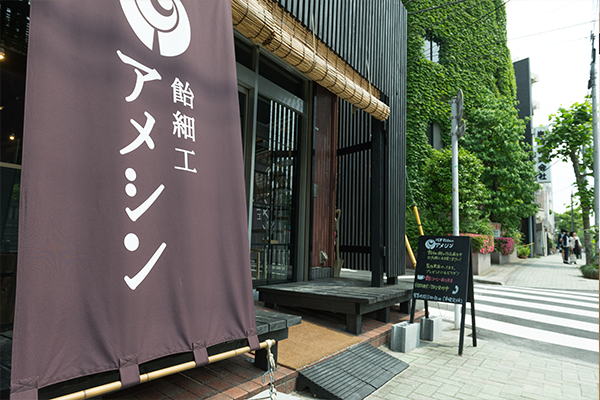
Nestled against a tall residential building, Ameshin Asakusa is unique in its outer appearance, a dark blue linen sign against a dark wooden wall.
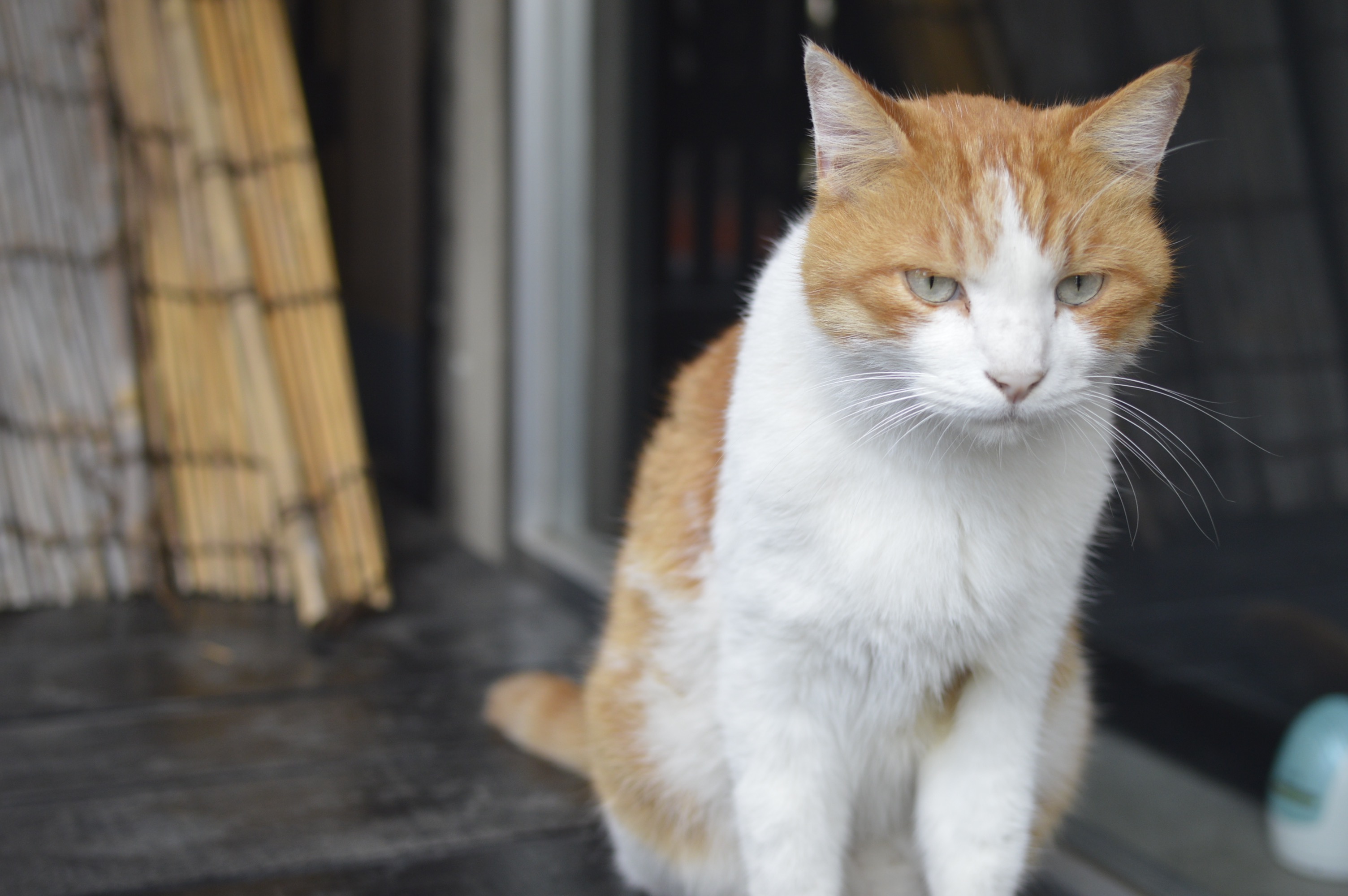
Relaxing in front of the entrance is “Boss”, a stray cat living in the neighborhood.
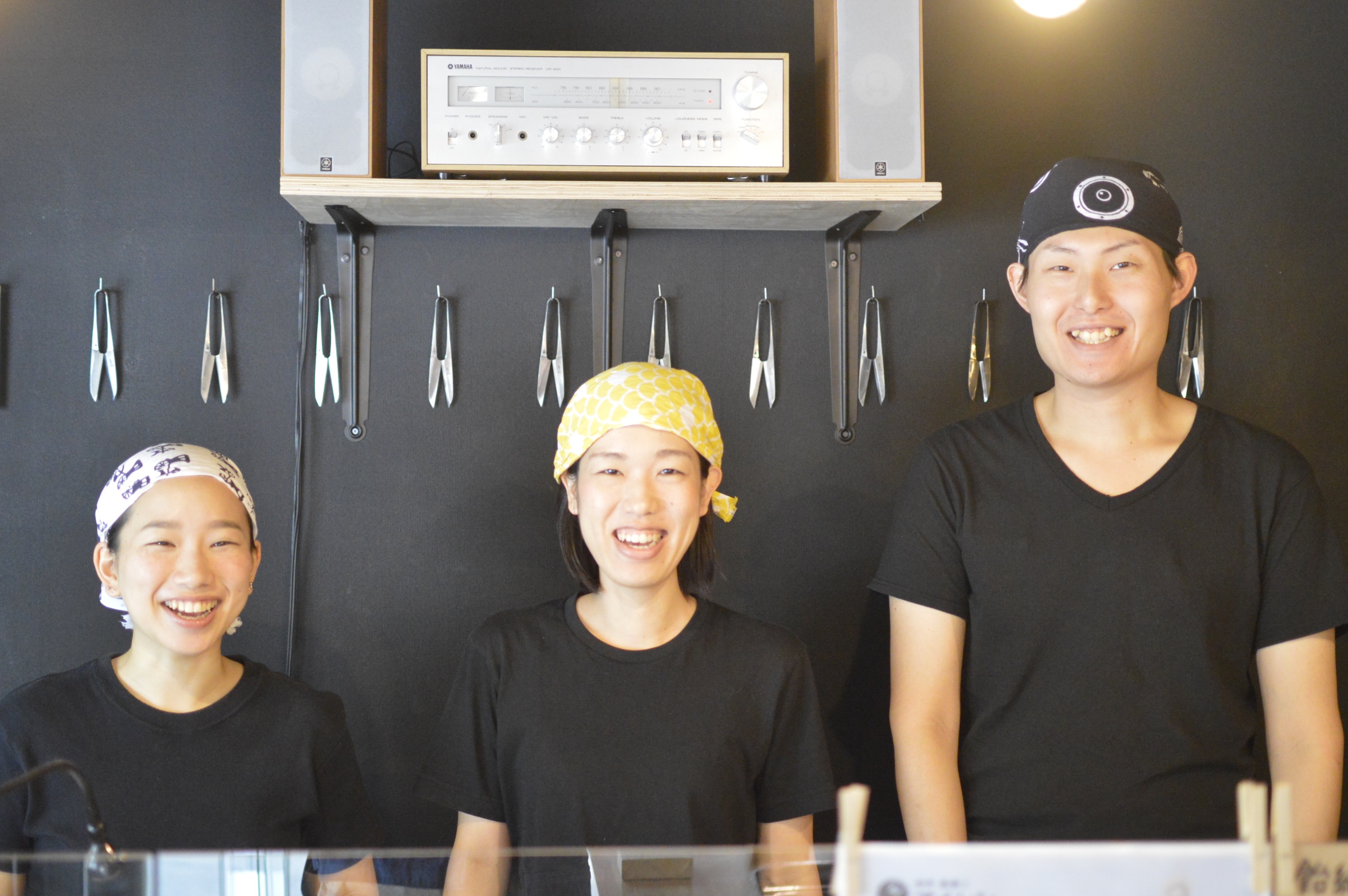
The young apprentices welcoming us today!
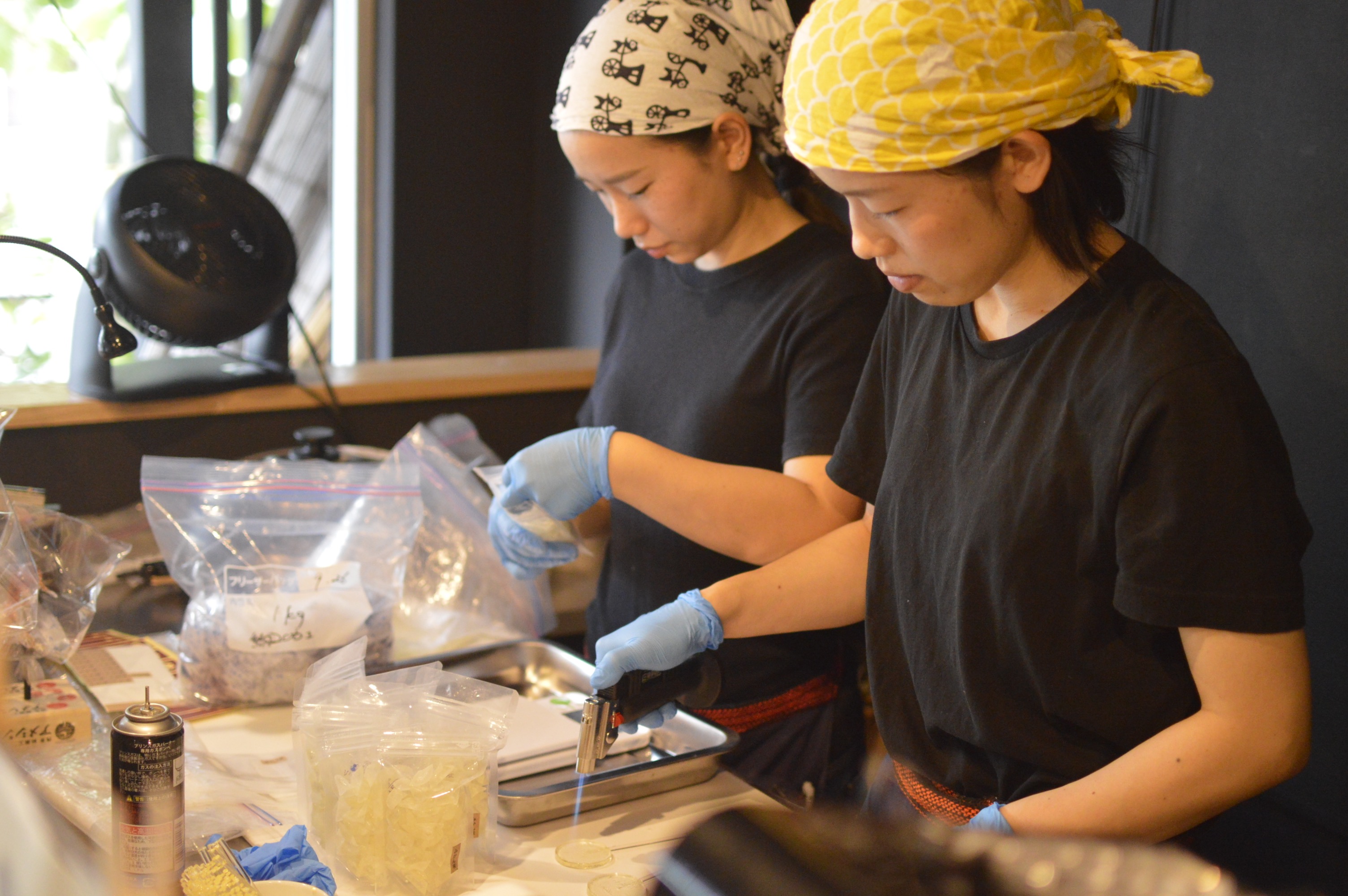
What the apprentices have in common with their master Tezuka is that they are all very young. Even an old tradition such as amezaiku – it is said to date back to the 8th century – still catches the interest of young people. While old traditional crafts in my home country Germany tend to slowly extinct, I was impressed to see how this old craft is still carried on by young successors. Yet again a different side of Japan, usually famous for its innovative technology and media.
The apprentices told me they have always been interested in manufacturing, or making things by hand, and one of them had worked in the field of making sweets before. Their starting point was a amezaiku workshop right at this shop – they were hooked on the spot and asked Tezuka to teach them. And here they are! You could see their passion for the amezaiku profession in their eyes lighting up while they spoke, and the wish to entertain their customers in their smiles.
Let’s make some amezaiku!
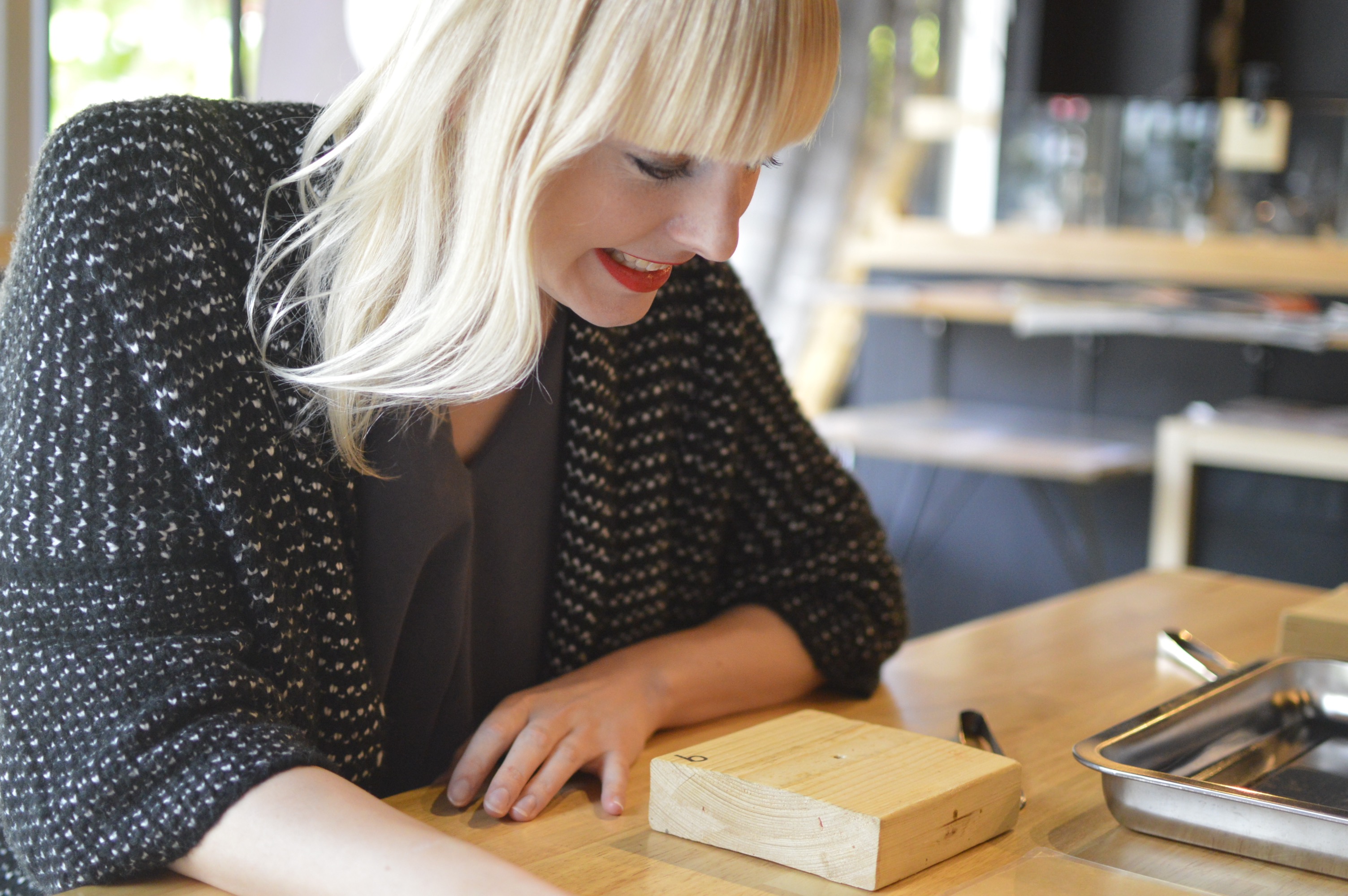
Time for an Amezaiku Workshop. We are going to make a rabbit, apparently one of the shapes easiest to start with.
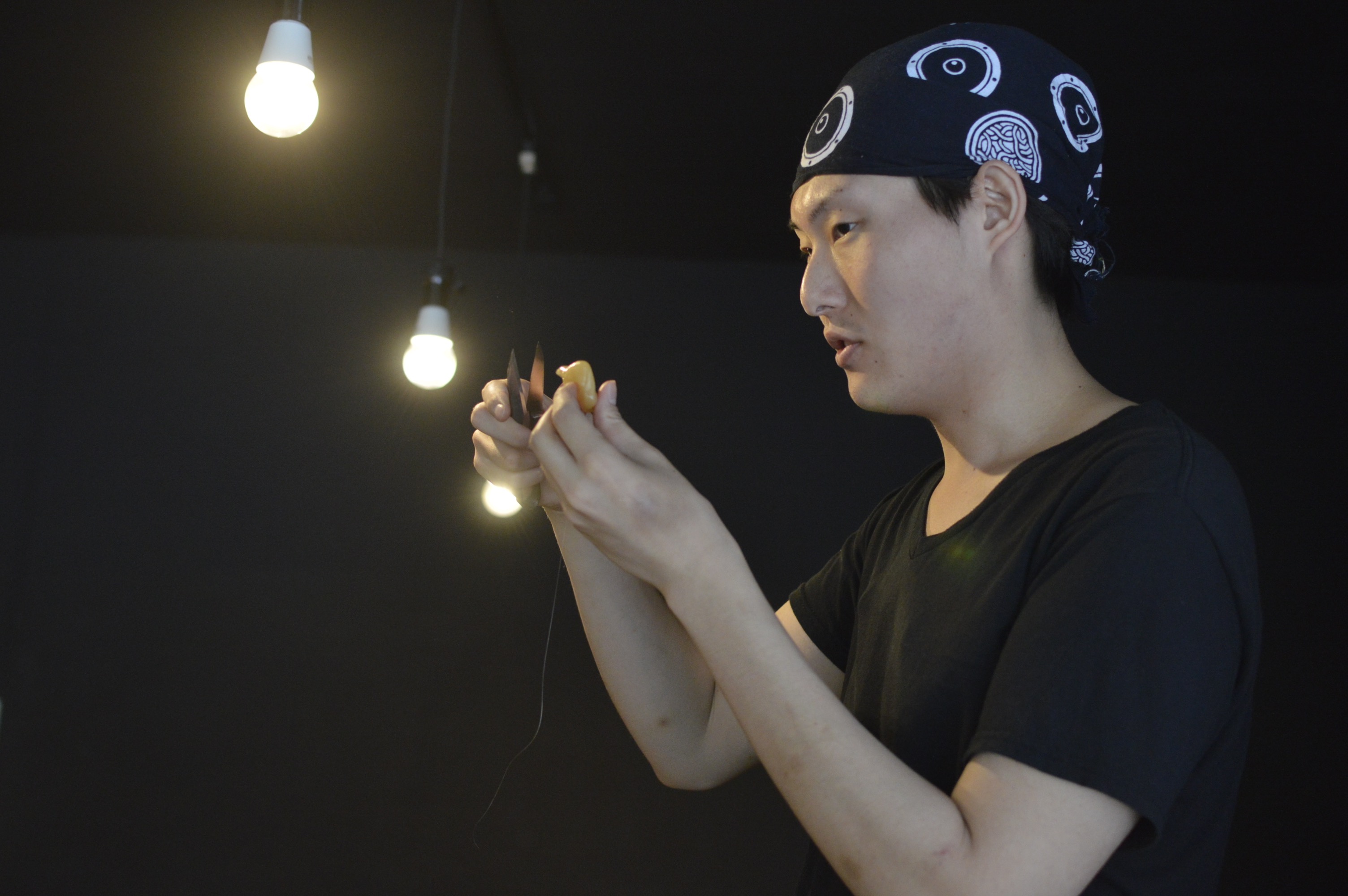
Every seat was taken. These workshops are quite popular, and many foreigners, tourists or exchange students, take part. I was a bit nervous, as I am not very good at handicrafts, but I was also excited to see how amezaiku are made. We would go through three times of making a rabbit – two trials and one real take. But first, we were shown how a rabbit is made, with explanations on how to use the scissors and where, and a few tricks and tips.
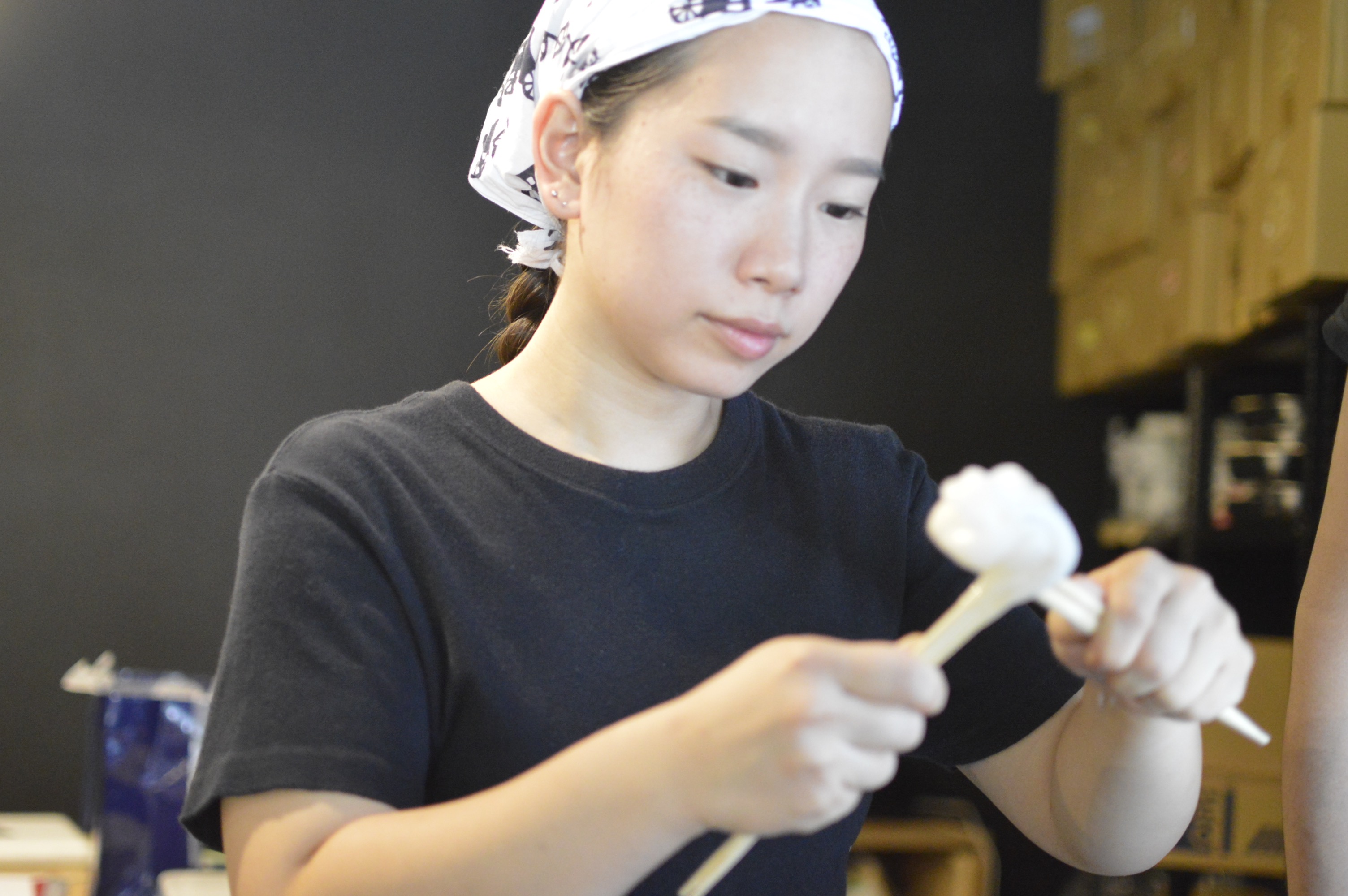
Next, they prepared and placed our soft candy on the sticks.
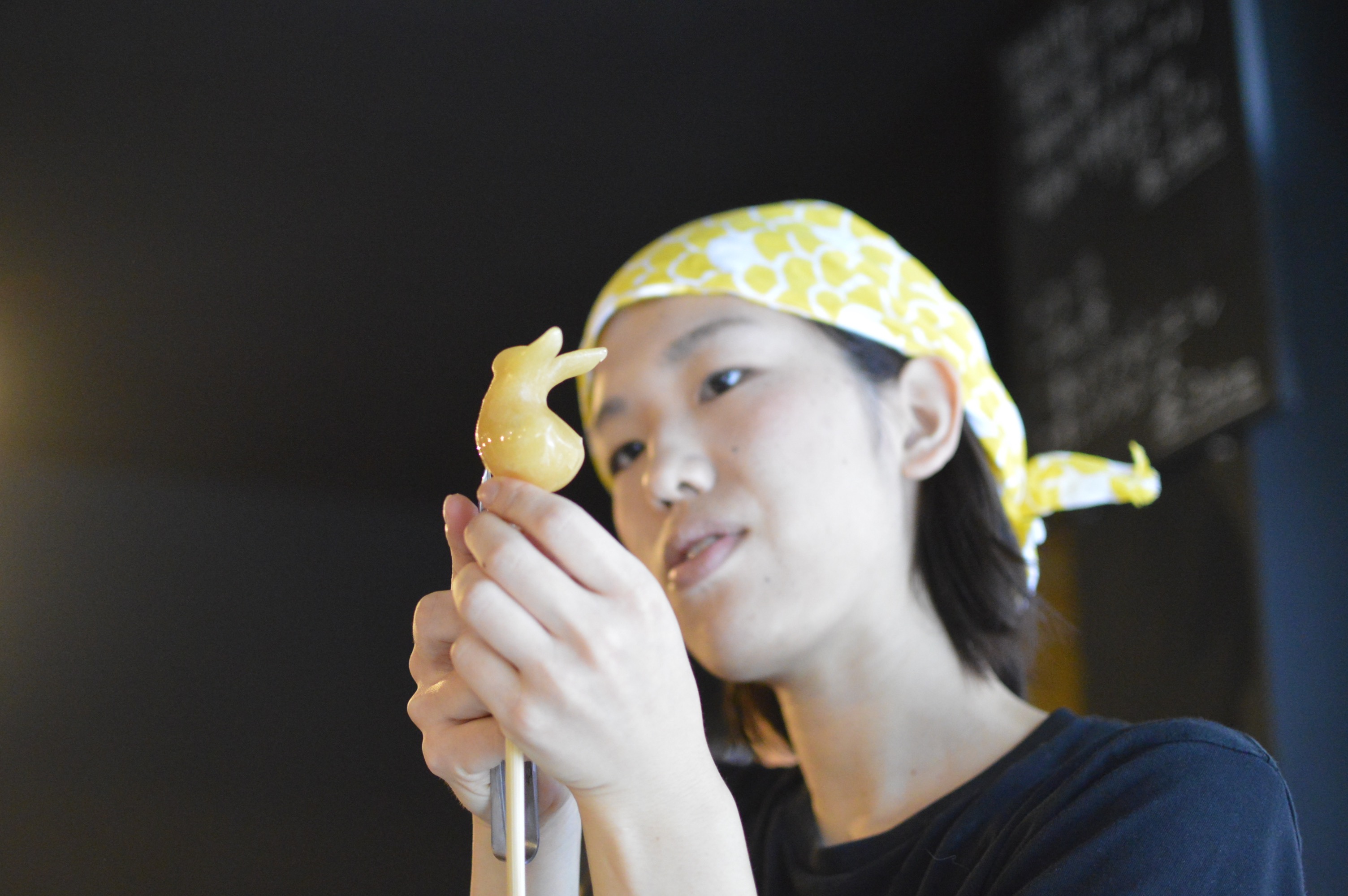
Now it was our turn. We received a clump of candy on a stick, and tried our luck.
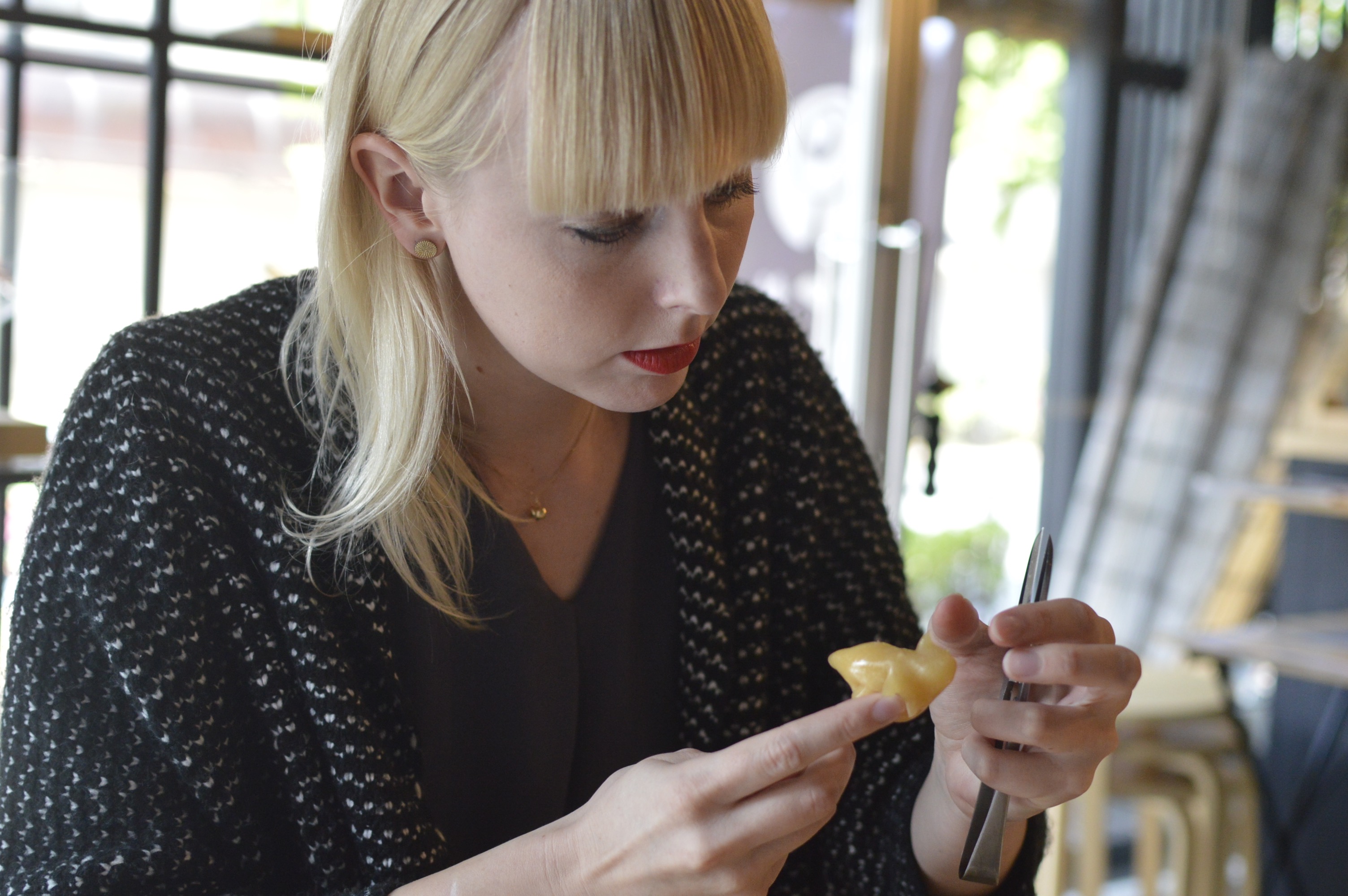
What looked so easy from afar was actually quite tricky. Finding the right spot to use the scissors, and forming the rabbit while still not touching the candy too much as my cold hands would accelerate the hardening process. The first time, I was obviously to shy to use the scissors. My rabbit looked more like a very fat seal but with tiny, pointy ears and feet.
Off to the second round!
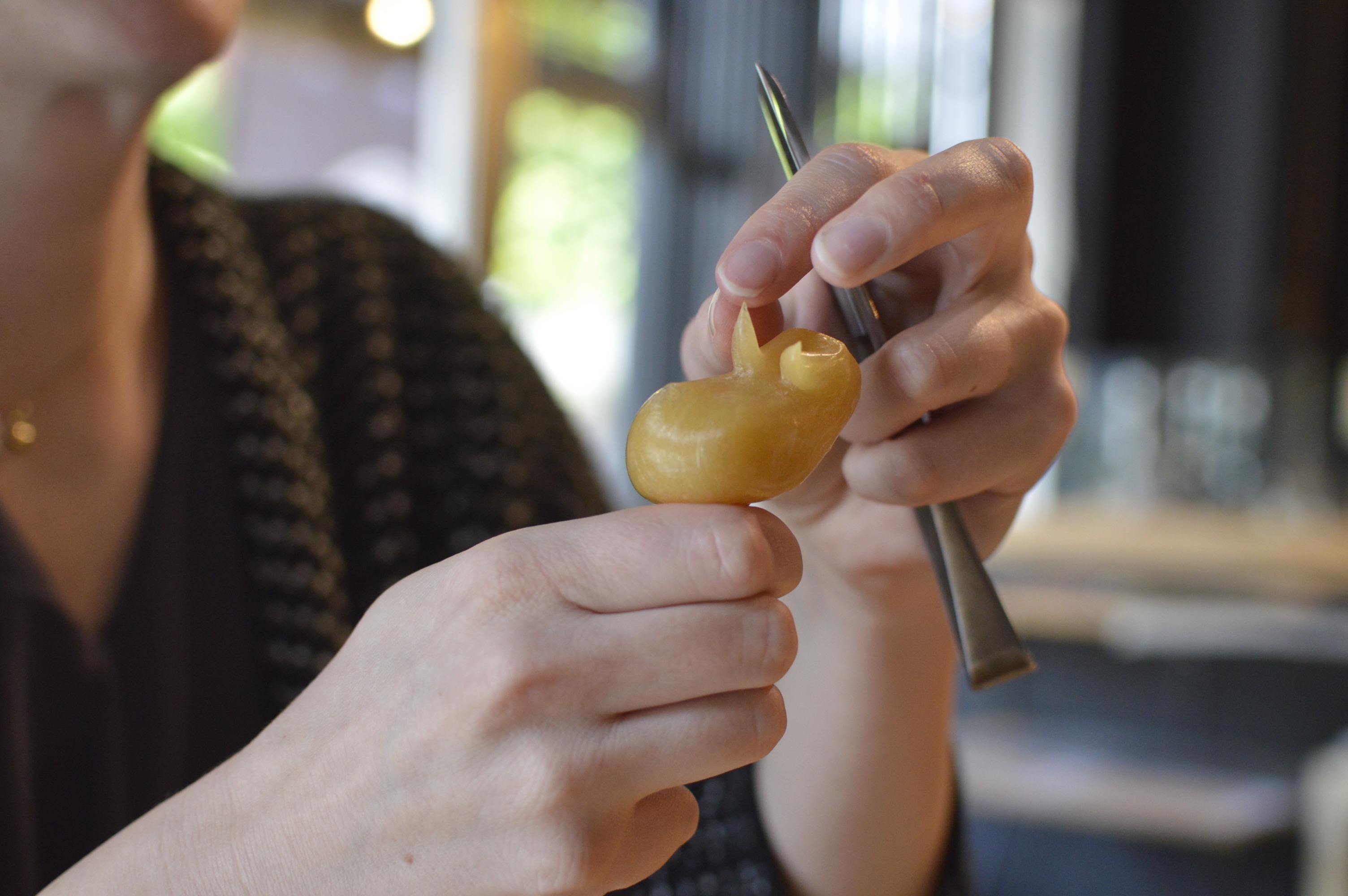
Not a seal, but definitely not a rabbit as well… I think the apprentices were at a loss for words too.
Time for the main take!
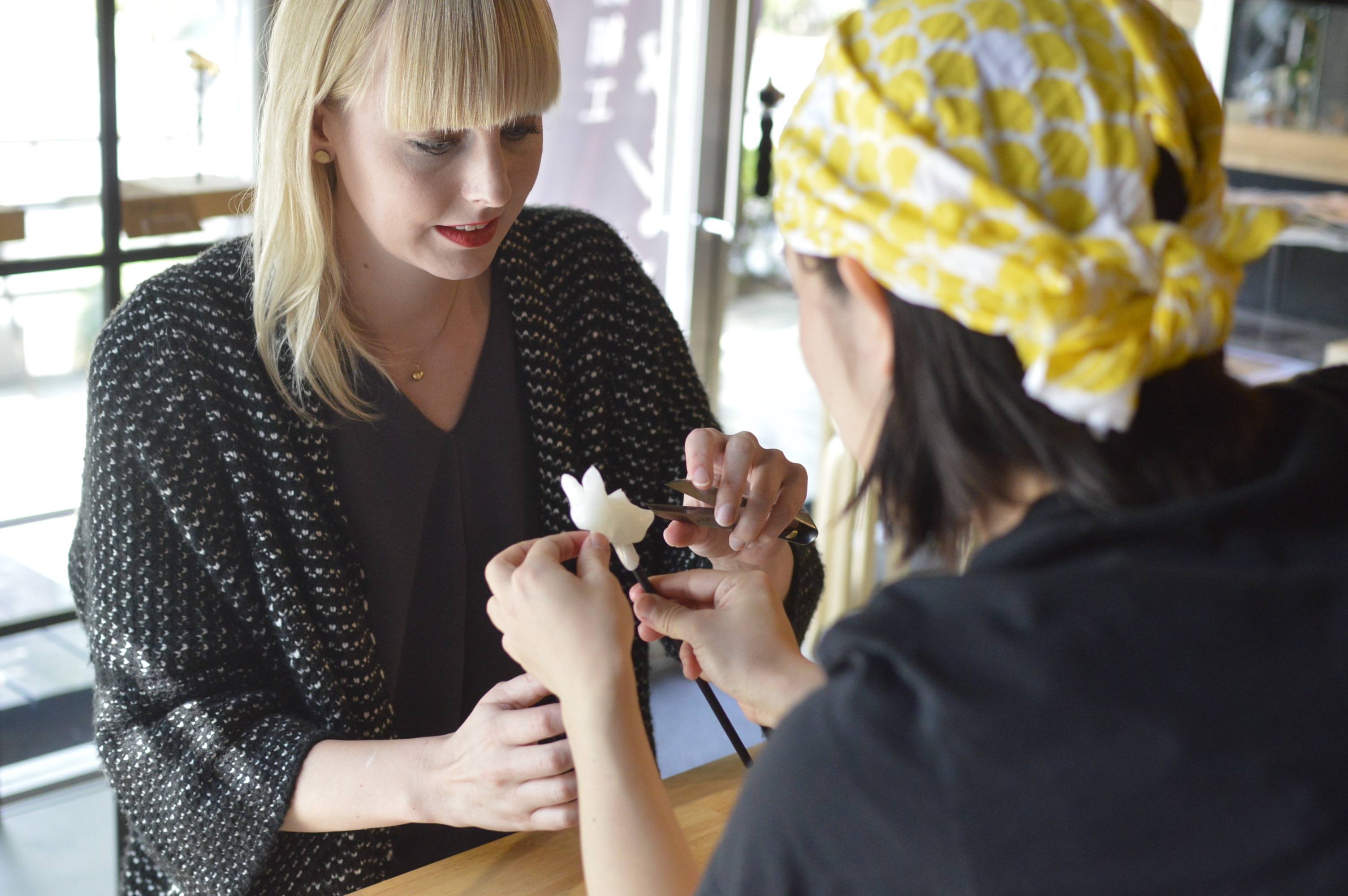
I think the apprentices saw how I was struggling, so they helped me. So somehow, we finished a rabbit, more or less. But fail or no fail, this was the final rabbit.
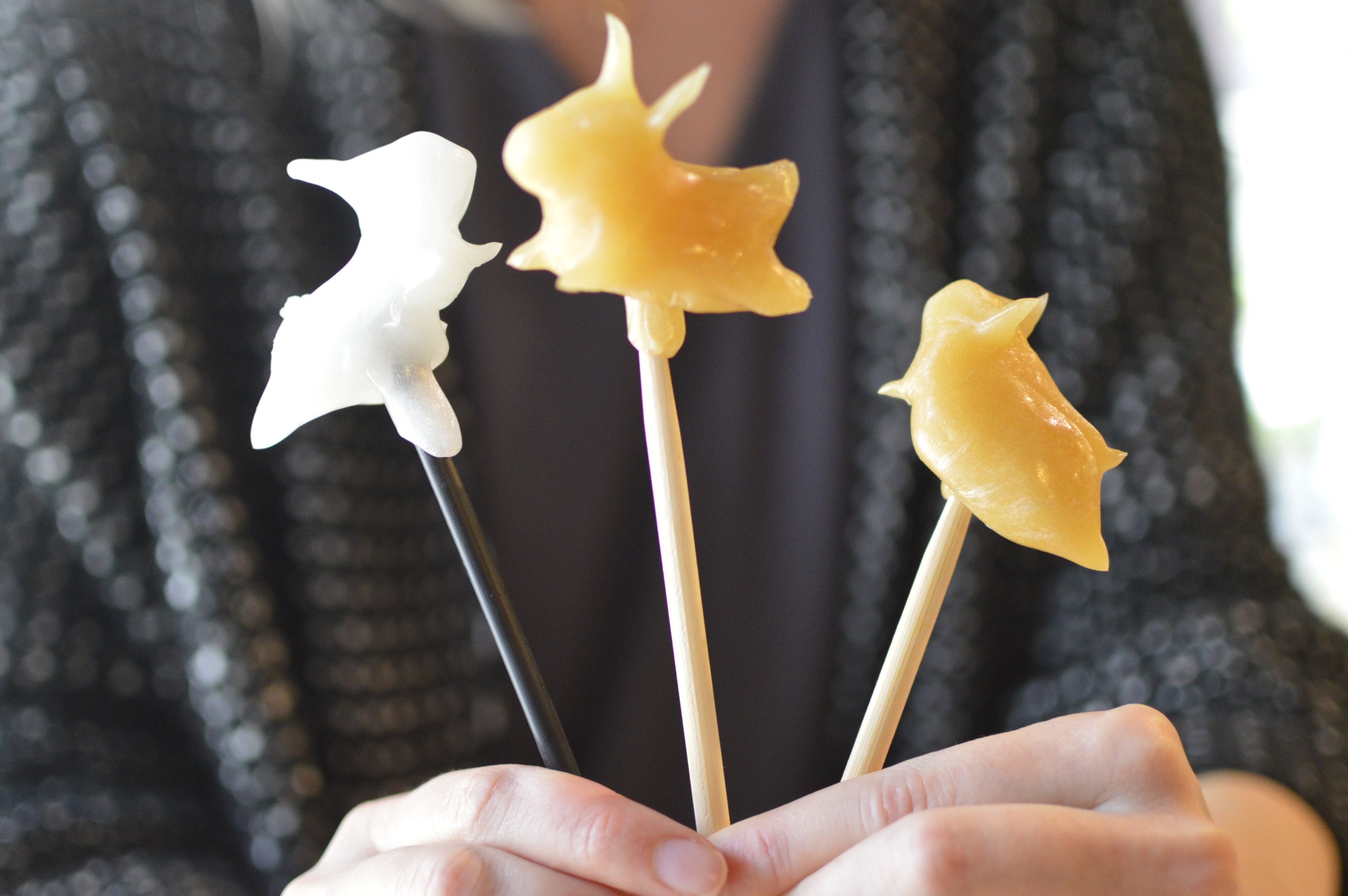
The one on the right was my first try, the one in the middle the second. Finally, the result of the main take on the left.
Originally, the candy is clear and transparent. By using heat to soften it, and then adding air by touching it, it becomes gradually white. By changing the coloring, or the times touching it while forming the shape, you can create all kinds of color variations. By the way, the candy used for the trial runs has been heated up repeatedly, giving it a brown color.
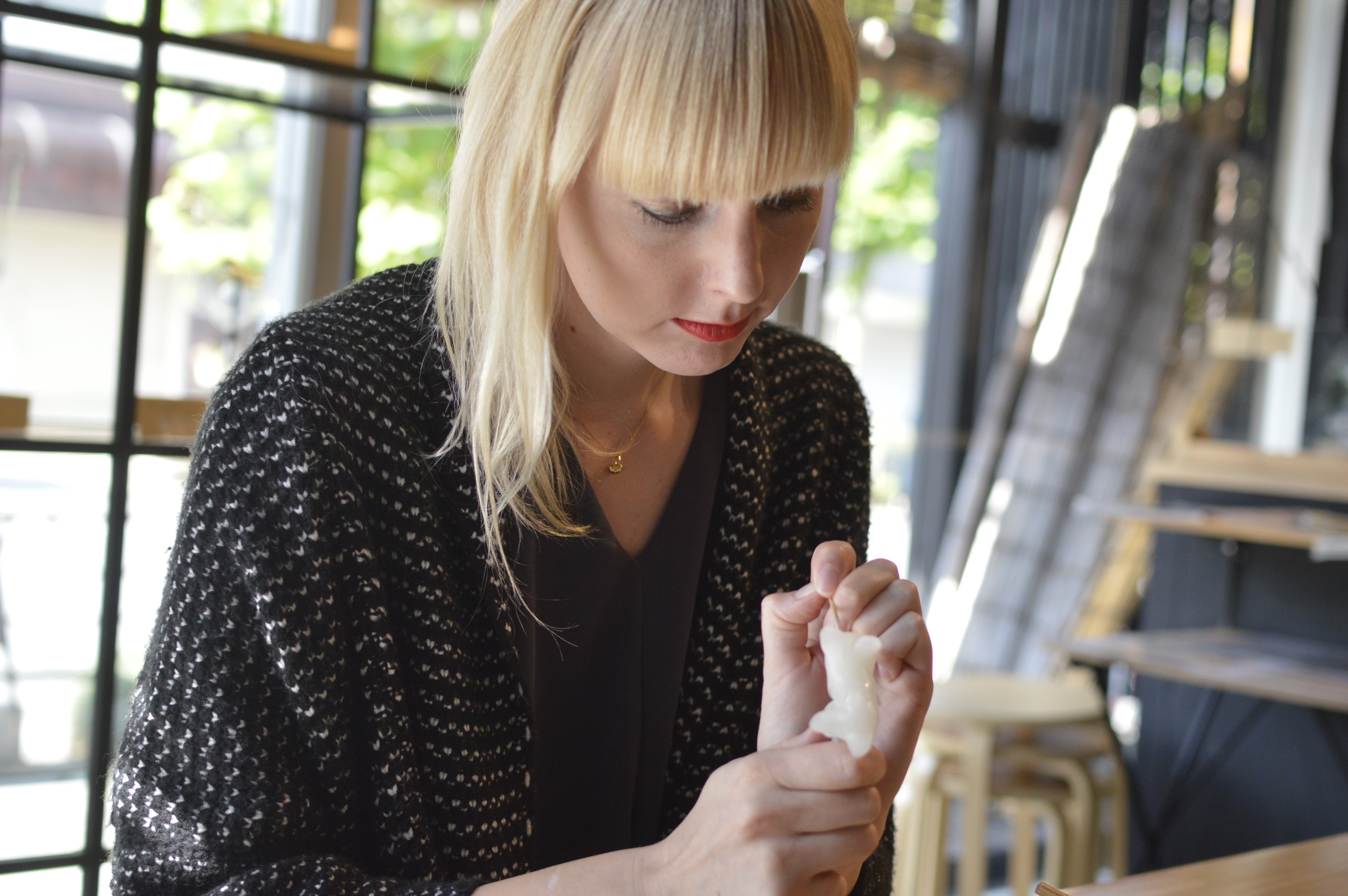
And finally, finishing up the rabbit by painting the eyes. At the end of the workshop, all of us received our rabbit wrapped to take it home.
Introducing Ameshin
There are two Ameshin shops – the one in Asakusa where you can participate in a workshop, and the one in Tokyo Skytree Town Solamachi mall, where you can enjoy amezaiku performances and actually by some. Make sure not to visit the wrong shop!
For a workshop, visit Ameshin Asakusa.
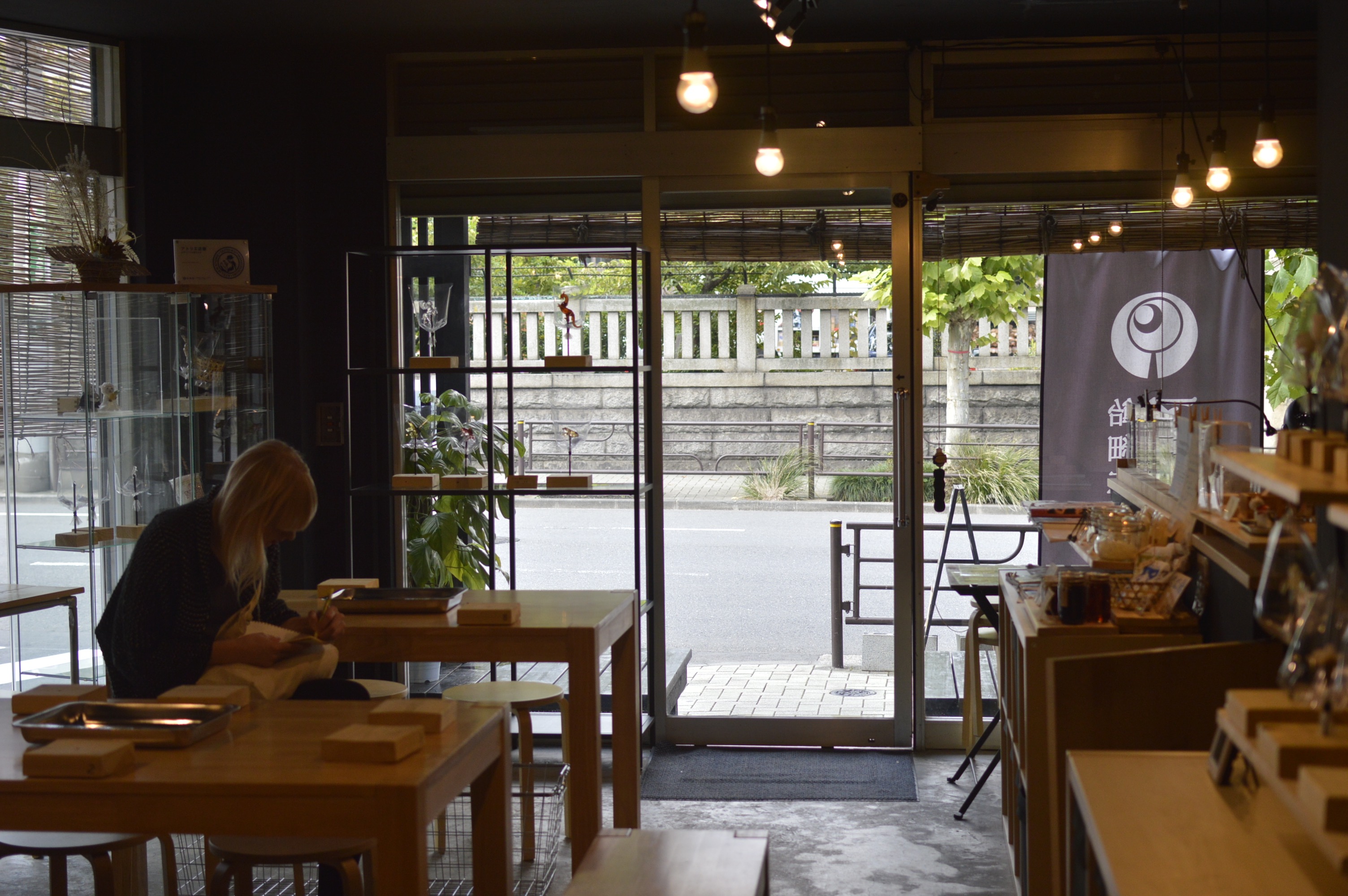
If you would like to try your luck at making amezaiku in a workshop, go to Ameshin Asakusa. You will need to make an appointment – the day I participated, every seat was taken. The fees are 3,000 yen for adults, and 2,500 yen for children.
Ameshin Asakusa
Tokyo-to, Koto-ku, Imado 1-4-3
TEL: 03-5808-7988
*There are no performances or selling of amezaiku here.
For performances and buying amezaiku, visit Ameshin Tokyo Skytree Town Solamachi instead.
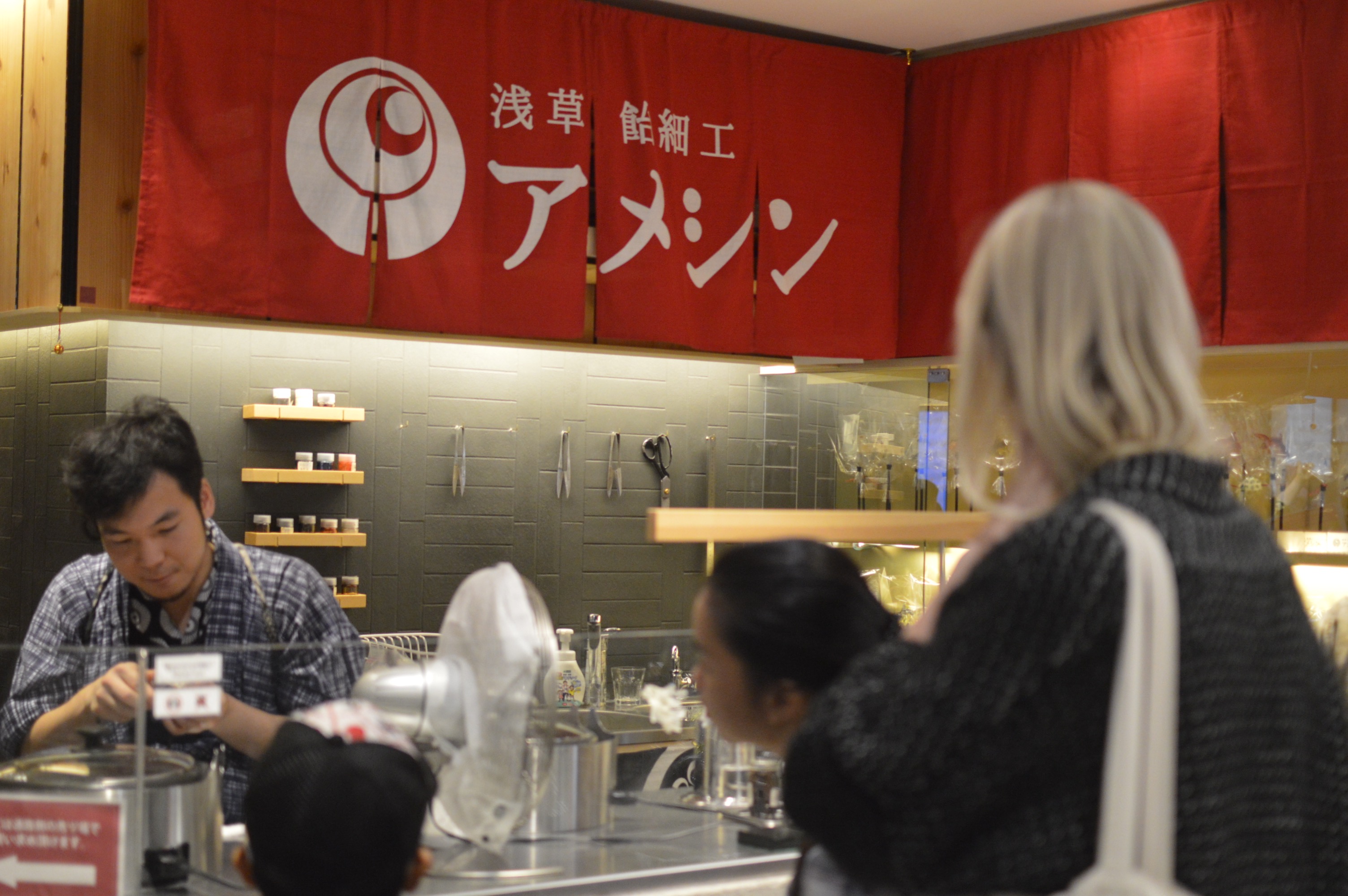
For amezaiku performances of master Tezuka and for buying some amezaiku, go to Solamachi. They day we visited was a sunny, warm national holiday, the mall was packed with people, and Ameshin was particularly popular. People passing by stopped, fascinated by the amezaiku and how Tezuka worked on a new goldfish.
The crowd made it impossible to talk to Tezuka that day, so we just enjoyed looking at a few more amezaiku and seeing him making new ones. Again, I was fascinated by the skill of his calm hands, and the faint smile on his face showing his commitment and love for his work. With his and his apprentices’ dedication and positiveness, I am sure they can make the old and traditional art of amezaiku much more famous again!
Ameshin Tokyo Skytree Town Solamachi
Tokyo-to, Sumida-ku, Oshiage 1-1-2, Tokyo Skytree Town Solamachi 4F
*No amezaiku workshops here
Summary
Amezaiku – a craft you see less and less, even at street stalls. Shinri Tezuka, founder and owner of Ameshin, hoping to make the craft known to even more people, the young apprentices, fascinated by amezaiku and studying restlessly – they are not only preserving a part of Japanese culture, but also traditional Japanese craftsmanship. If you are in Asakusa and curious to walk down the backstreets to explore something a bit unusual, make sure to stop by Ameshin!

